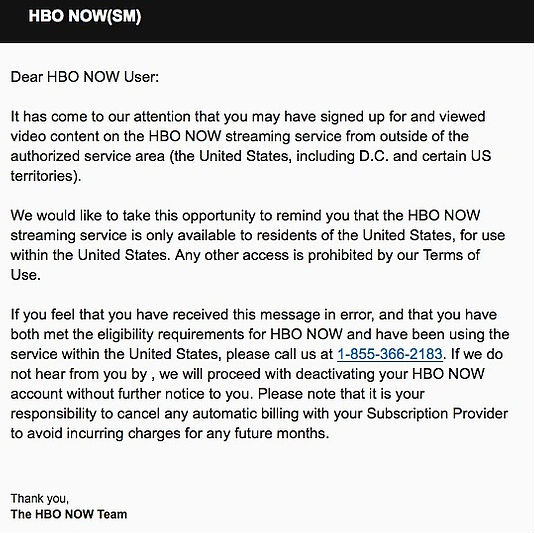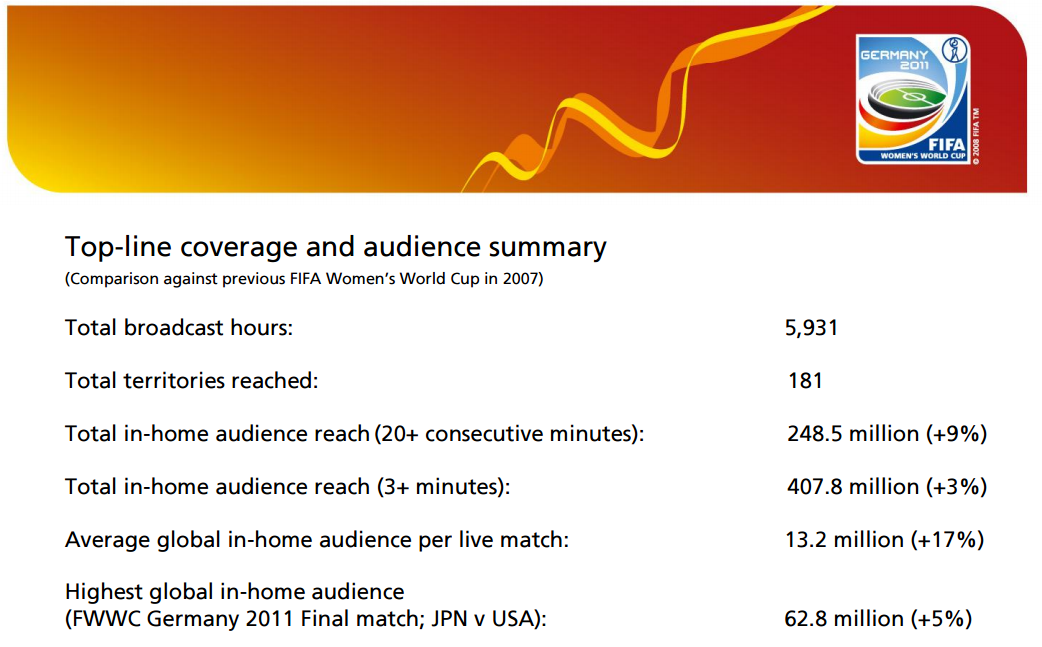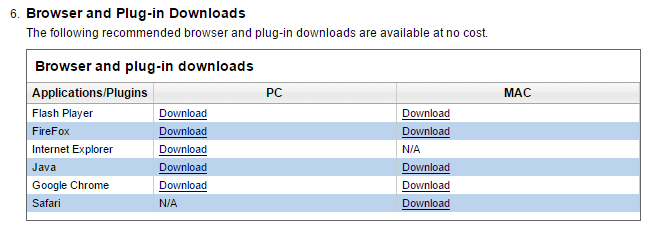HBO Now Doesn’t Know What It, Or Its Customers, Want
HBO, despite attempts to draw a larger consumer base via the still-new HBO Now streaming platform, seem set on alienating some of those very same new consumers. As stated in the terms of service, HBO NOW is available and designed strictly for United States residents, though numerous Canadians, European countries and Australia have circumvented the geo-locking HBO has placed on their product. At least until a few days ago, when The Sydney Morning Herald reported receiving emails from HBO warning of the potential for service to be cut off as soon as tomorrow. Rather than get payment in exchange for a service — a pretty basic concept — HBO seems to prefer receiving nothing.
From the above link, the following is an email sent to an Australian HBO Now user:
Using a virtual private network (VPN) to trick the HBO NOW service into believing the the customer is located within the U.S. is apparently akin to pirating. If HBO is threatening to punish people who already pay for their service, it is curious to see them complain about online leaks when they take away a viable option for people to lawfully watch their shows.
On the opposite end of the spectrum is Netflix, who also has strict terms of service regarding location, but is yet to actively target consumers. The streaming giant did limit the mobile — specifically Android — based geo-locking tricks, however Netflix spokesman Cliff Edwards said as long as the consumer can be verified in the correct location, they company will not block legitimate VPN usage. In an email Edwards wrote “There’s been no change to our VPN policy.” In a separate appearance, Edwards claimed “Detecting VPN usage is like playing a game of whack-a-mole.By their very nature, it’s difficult to tell how many people are bypassing geofilters.”
HBO NOW’s launch was disappointing even before this with their initial exclusive Apple partnership, but to see them go after paying customers, despite being out of the country, is shocking. If a foreign cord cutter isn’t allowed to pay for the standalone HBO programming, only one option remains and it involves the consumer getting what they want with HBO receiving zero payment.








